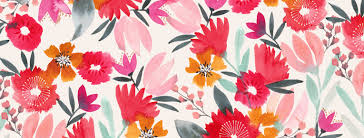
Designing a Brighter Future: The Power of Creative Innovation
The Art of Design: Shaping the World Around Us
Design is more than just aesthetics; it’s a powerful tool that shapes the world we live in. From the buildings we inhabit to the products we use daily, design influences our experiences and interactions with the environment.
At its core, design is about problem-solving. It involves finding innovative solutions to challenges, whether they are functional, aesthetic, or both. Designers blend creativity with practicality to create objects and spaces that not only look good but also serve a purpose.
Good design is intuitive and user-centered. It considers the needs and preferences of the people who will interact with it, ensuring that functionality is not compromised for style. Whether it’s a sleek smartphone interface or a comfortable chair, successful design enhances usability and enriches our lives.
Design also plays a crucial role in communication. Through typography, color schemes, and layout, designers convey messages and evoke emotions. A well-designed logo can instantly communicate a brand’s identity, while an engaging website can captivate visitors and guide them through content seamlessly.
In today’s fast-paced world, design continues to evolve alongside technological advancements and changing social trends. Design thinking—a human-centered approach to innovation—has gained prominence in various industries as a method to tackle complex problems creatively.
Ultimately, design is about transformation. It has the power to inspire, provoke thought, and drive progress. Whether it’s reimagining urban spaces for sustainability or revolutionizing healthcare experiences for better patient outcomes, design shapes our future by envisioning what could be and making it a reality.
5 Essential Design Tips for Clarity, Cohesion, and User-Friendly Interfaces
- Keep it simple and clean to avoid clutter
- Use a consistent color palette for a cohesive look
- Pay attention to typography for readability and visual appeal
- Balance elements in your design to create harmony
- Consider the user experience when designing interfaces
Keep it simple and clean to avoid clutter
When it comes to design, adhering to the principle of keeping it simple and clean can make a significant difference in the overall impact of your work. By avoiding clutter and unnecessary elements, you allow the essential aspects of your design to shine through. A clean and simple design not only enhances visual appeal but also improves readability and user experience. Embracing simplicity can create a sense of clarity and elegance that resonates with your audience, making your message more effective and memorable.
Use a consistent color palette for a cohesive look
When it comes to design, using a consistent color palette can greatly enhance the overall aesthetic and create a cohesive look. By selecting colors that complement each other harmoniously and sticking to them throughout a project, whether it’s a website, branding materials, or interior design, you establish a visual identity that is both pleasing to the eye and memorable to the viewer. Consistency in color choice helps tie different elements together, creating a sense of unity and professionalism in the design.
Pay attention to typography for readability and visual appeal
When it comes to design, paying attention to typography is crucial for both readability and visual appeal. The choice of fonts, sizes, spacing, and alignment can greatly impact how easily information is consumed and how engaging a piece of content appears. Clear and well-chosen typography enhances the overall aesthetics of a design while ensuring that the message is effectively communicated to the audience. By carefully selecting typography that complements the overall design concept, designers can create visually pleasing and easily digestible content that resonates with viewers.
Balance elements in your design to create harmony
Achieving balance in design is essential to creating a harmonious composition that is visually pleasing and effective. By carefully distributing elements such as color, shape, texture, and space within a layout, designers can establish a sense of equilibrium that guides the viewer’s eye and conveys a sense of stability. Whether through symmetrical arrangements for a formal look or asymmetrical placements for a dynamic feel, balancing design elements ensures that each component contributes cohesively to the overall aesthetic appeal and message of the piece.
Consider the user experience when designing interfaces
When designing interfaces, it is crucial to consider the user experience. By putting the user at the center of the design process, designers can create interfaces that are intuitive, user-friendly, and engaging. Understanding the needs, preferences, and behaviors of the target audience allows for the creation of interfaces that not only look visually appealing but also function seamlessly. A focus on user experience ensures that interactions with the interface are efficient and satisfying, ultimately leading to a positive overall experience for the user.









-
Tagged analysis, bridge gaps, comprehensive news coverage, coverage, dialogue